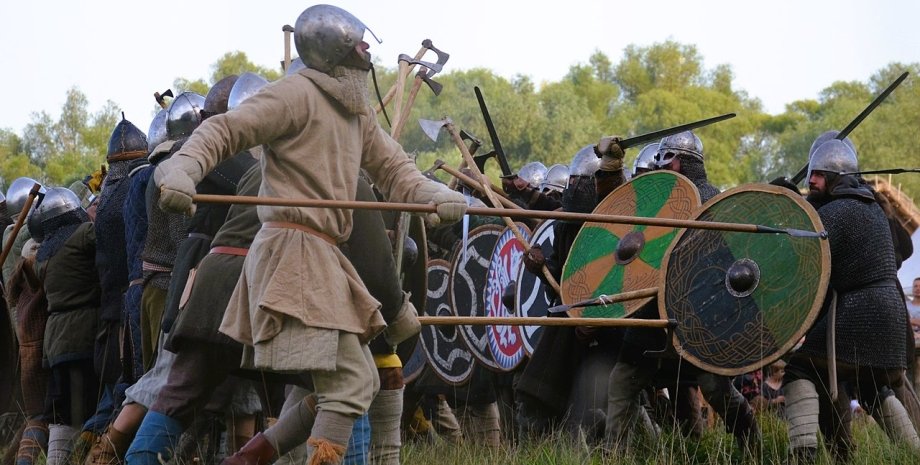
Studying 1100-year-old wooden shields in Norway, the specialist found evidence that they were probably covered with protective raw skin, which indicates their suitability for a real war, Ancient Origins reports. In focus, technology appeared its Telegram channel.
Subscribe to not miss the most info and interesting news from the world of science! Archaeologist of Stockholm University and Viking's Vikings Expert Ramf Varming has published a study in which he suggests that the "ritual" Viking shields could be used in real battles. In his study, he re-studied 1,100-year-old Vikings wooden shields in Norway in 1880, and concluded that they were made to be quite suitable for battle.
Contrary to the results that these shields were too thin and fragile to provide proper protection in real war and were therefore used only for ceremonial purposes. Varming examined the shields and found: perforation at the edges of the shield indicates that the painted surface was once covered with a protective layer, probably, with raw skin, which was found on ancient shields.
Although there was no such coating on the Gokstad shields, the perforation was in the place where such a cover should be attached (and was attached to other ancient shields made by the same projected specifications). However, the shields were found without attached skins of animals that would be necessary for them to function as manual protective shields. Vorming argues that Vikings have been used as burial objects, but this does not necessarily mean that they have never been used in battle.
In his study, the Vikings of the Vikings Era, Rolf Varming, analyzed not only the physical characteristics of the shields, but also their historical context. Shields were found inside the buried Viking ship, which was found under a large mound in the Hokstad in the east of Norway. It is believed that the ship was built around the beginning of the 10th century AD. BC and probably used for several years before he was buried with his contents, including shields.
Varming suggested that 64 Viking Shields found could represent the number of men who served on the Hokstad ship when it was in order. Made of pine boards, the Gokstad shields consisted of wooden boards, narrowed at the end and rounded from the outside. Despite the size and shape, the Vikings shields were found without any skins. This protective layer would be necessary for them to function as manual protective shields. In addition, the wood was generally not particularly thick.
This forced previous experts to carry out primary analysis and quickly conclude that the shields were only ritual objects and were not used in battle. However, Varming believes that the boards are made so as to be quite suitable for battle, despite the previous conclusions about the opposite.
Taking the initiative to solve the problem of omitting a detailed study of fragments of wooden panels, Varming has received permission to work from the Viking Museum in Oslo, where various remains and artifacts from the Viking ship are stored and exhibited. The researcher was amazed at how much the shields corresponded to structural models that could be seen in other ancient samples of combat panels.
"In general, the skill of manufacturing mostly corresponds to other findings of panels that are practical, as well as the Germanic tradition of flat round shields in general," he wrote, making connection with other shields. Although Vorming's conclusions are previously and do not necessarily prove that the ancient Vikings have been used in battle, his research adds a new perspective to existing studies of the Viking wooden panels.




















Všetky práva vyhradené IN-Ukraine.info - 2022